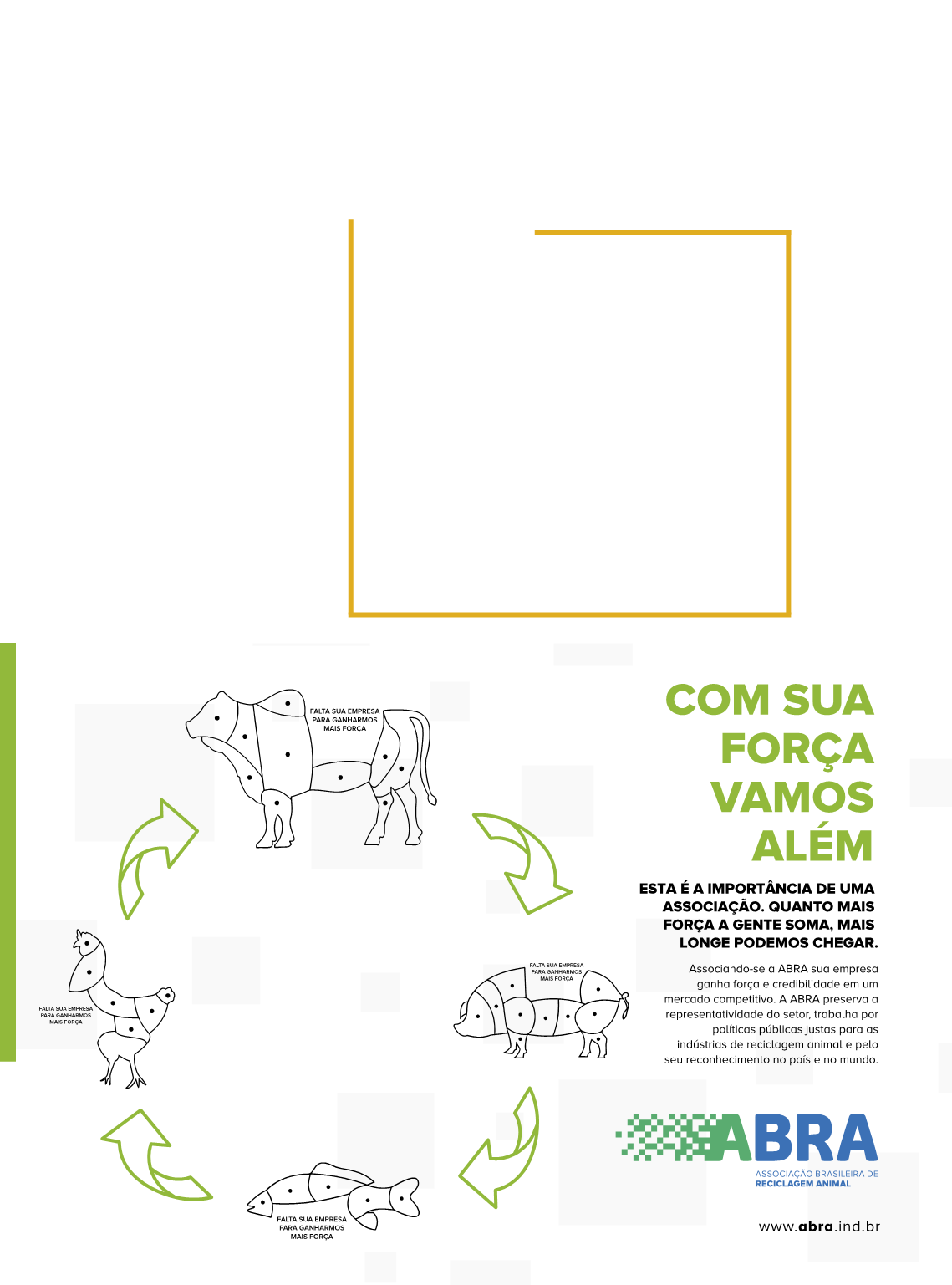
l
UNLICENSED
In a report released in 2016, FAOmaintained that fishing and aqui-
culture in Brazil should go up 104 percent by 2025. “This performance
will be viable if environmental licenses and the use of water are liberat-
ed by the federal government, by the end of 2018”, says Francisco Me-
deiros,executivepresidentatPeixeBR.Therefore,accordingtohim,for
the strides to occur, there is need for self-declaratory online licensing
and immediate liberation of the upwards of 3,000 thousand contracts
allowing for the use of water, now going through the channels of the
Aquiculture and Fishery Secretariat of the federal government.
Despite the potential for fish farming, Brazil continues importing
more fish than it exports. Foreign purchases totaled 402.924 thou-
sand tons and US$ 1.377 billion in 2017, while shipments abroad to-
taled 40.882 thousand tons and US$ 246.005 million, according to
data from the Agrostat system, of the Ministry of Agriculture, Live-
stock and Food Supply (Mapa). “The shortfall amounts to upwards of
US$ 1.2 billion a year”, insists Medeiros.
from the volume in the previous year. São
Paulo jumped to the third place, producing
48.35 thousand tons, up 47.5 percent, re-
sulting from the biggest investment in the
activity and the newcomers in the sector.
Total production amounted to 40.41 thou-
sand tons in Mato Grosso, which fell to the
fourth place, with a 14.8 percent reduction
of the production volume.
Brazil boasts a variety of fish species, and
some of these varieties prevail in volume. Ti-
lapia has become the most farmed fish, with
239.09 thousand tons in 2016, almost half
(47.1 percent) of the total produced in Brazil.
The volume of this species went up 9.3 per-
cent from 2015. Tambaqui was the second
most farmed species, equivalent to 27 per-
centofthetotalin2016.Thevolumeofthisfish
reachedatotalof136.99thousandtons,up0.2
percent.TambaquiisalsofarmedinRondônia,
whichaccountedfor50.8percentofthetotalin
theCountryandfor63.7percentintheNorth.
In spite of the fact that Brazil produces
and importsmore fish, per capita consump-
tion in Brazil is still below the average con-
sumed in the world. Consumption in Bra-
zil remains below 10 kilograms per person
a year, corresponding to the average in the
world in the 1960s, according to data re-
leased by the Food and Agriculture Orga-
nization of the United Nations (FAO). Con-
sumption recommended by FAO sources is
12 kilograms per person a year. The global
average has remained at 20 kilograms per
capita from2014 to 2017. “The volume con-
sumed ranges from 9 to 9.5 kilograms per
person”, says Francisco Medeiros, executive
president at Peixe BR.


